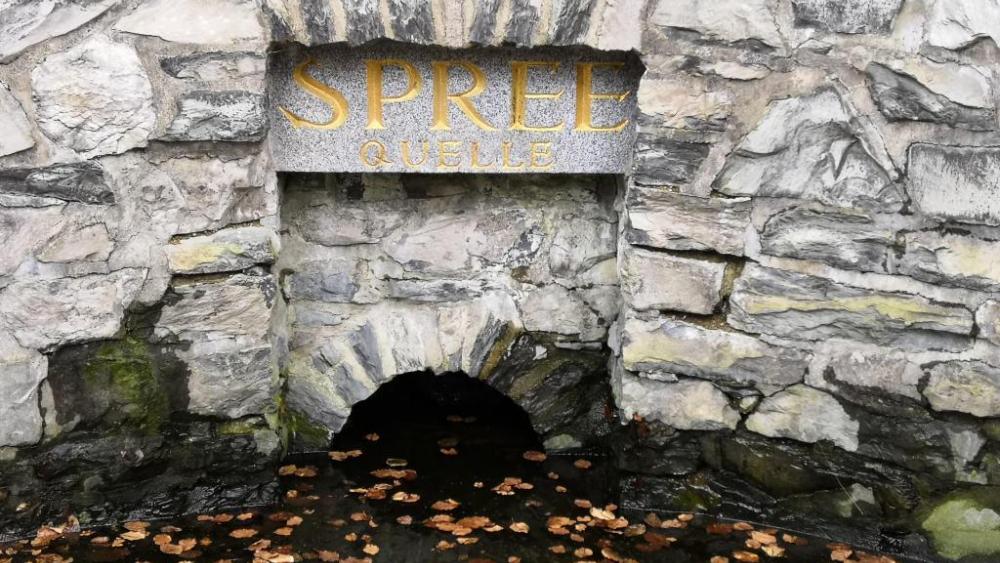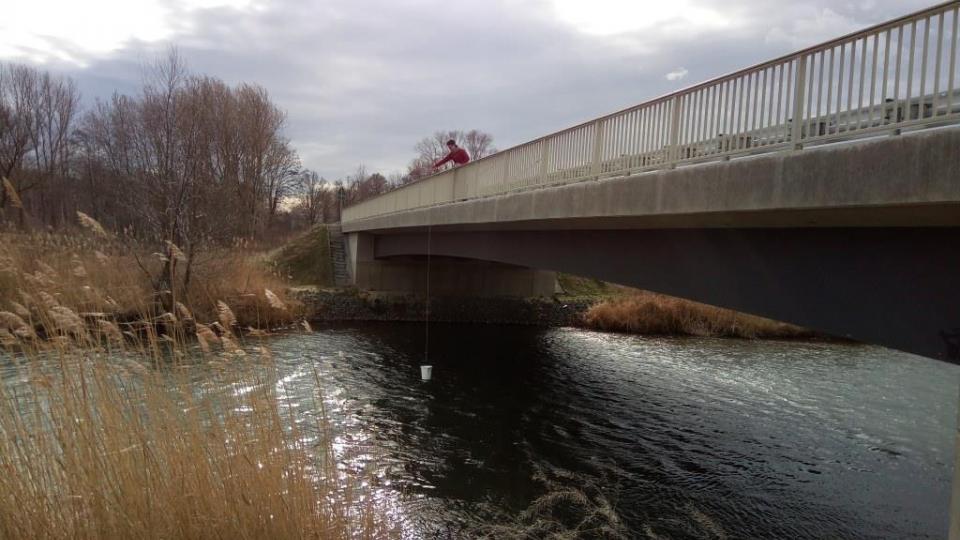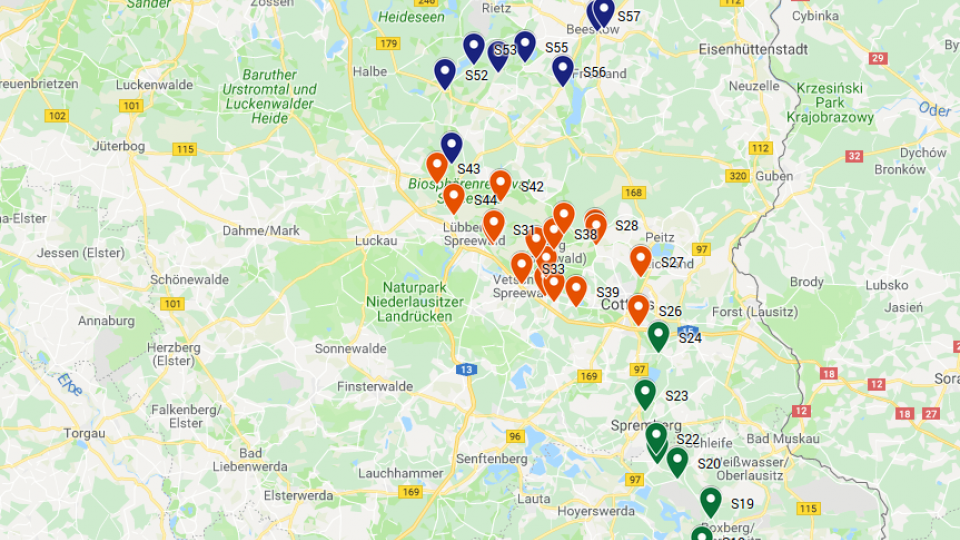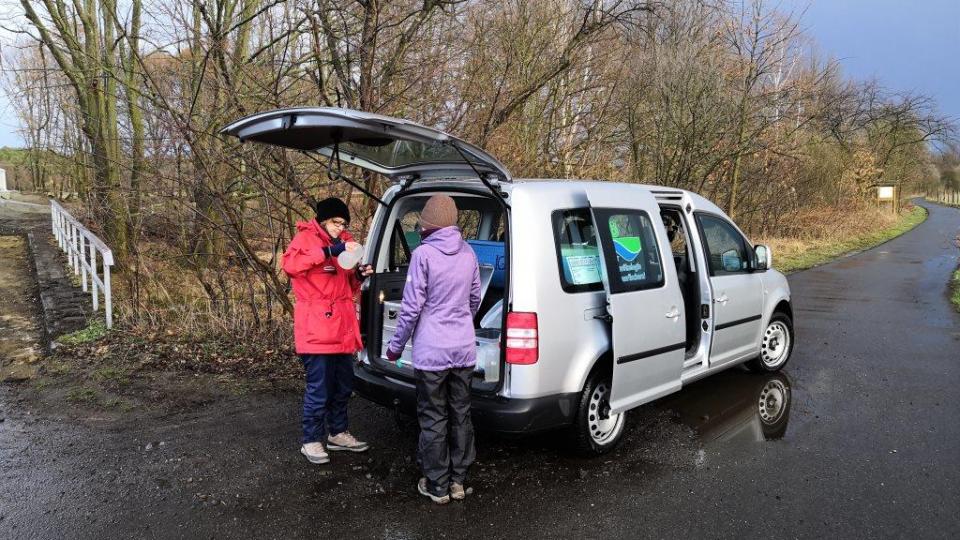
The Spree springs at Kottmar in Upper Lusatia. On its way to the estuary into the Havel, it flows through the Lusatian brown coal region and is exposed above all to sulphate and iron pollution. The IGB takes this as an occasion to sample the entire course of the Spree once a year. | Photo: IGB
Two IGB teams collected data on the chemical composition of the water, e.g. pH value, oxygen concentration, composition of salts and important binding forms of the nutrients nitrogen and phosphorus. These are included in the long-term monitoring programme of the Department of Chemical Analysis and Biogeochemistry and serve to assess water quality but also to document the changes of recent years. The effects of mining on water bodies are also the subject of a joint research project with the BTU Cottbus-Senftenberg.
For comprehensive sampling at 78 measuring points, the Spree was divided into four sections (see map). The samples were then taken by IGB staff from fixed bridges with buckets. On the first day an IGB team took samples from the urban watercourse of river Spree in Berlin, starting at the Salvador Allende Bridge in Köpenick up to the Rohrdammbrücke in the west of the capital. In addition, a sample of the river Havel was taken upstream and downstream of the estuary of the Spree. A second team took the samples between Cottbus and Lübben. The water samples were filtered and filled directly in the IGB bus due to the sometimes very high iron load and the associated reactivity. The samples arrived at the laboratory in the late afternoon and were immediately processed and analysed. The section from the Spree spring at Kottmar to the south of Cottbus was the most strenuous part for team 1. The sampling took so long that the samples did not arrive at the institute until late in the evening. The most important parameters were then measured until late into the night. Team 2 simultaneously sampled the comparatively short section between Lübben and Lake Müggelsee close to the institute. First results are expected within the next weeks. They will be included in the upcoming edition of the IGB Dossier on sulphate pollution of the river Spree.

IGB researcher Dr. Tobias Goldhammer taking samples in the east of Burg (Spreewald). | Photo: Sylvia Jordan

78 measuring points between spring and estuary were sampled. | Map: Google Maps

Antje Lüder and Giulia Friedland filling the samples. | Photo: Thomas Rossoll







